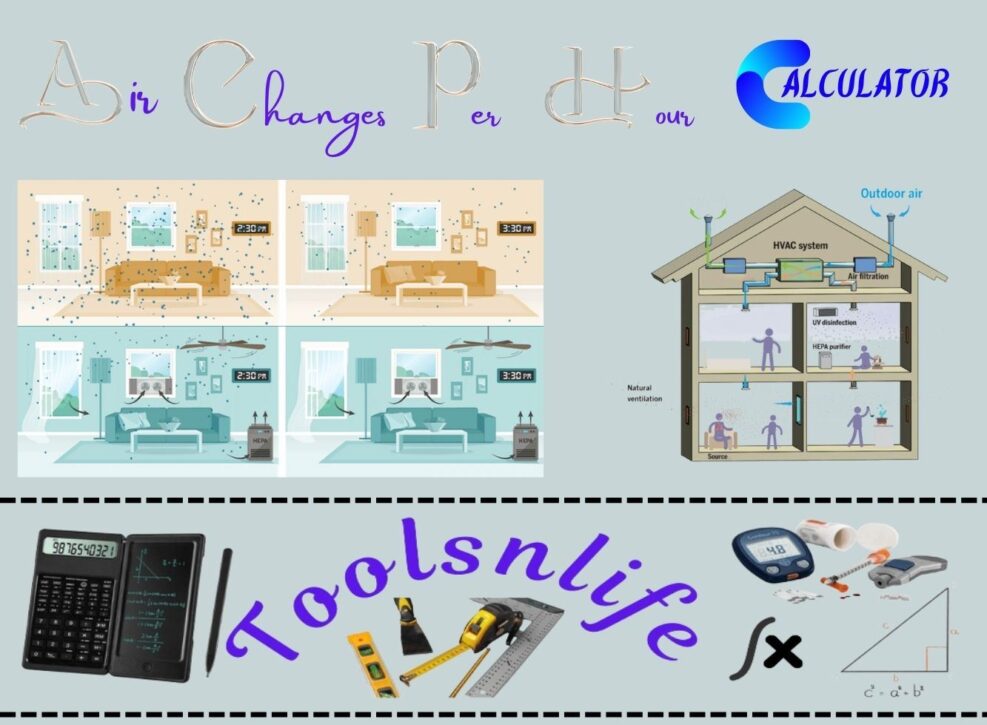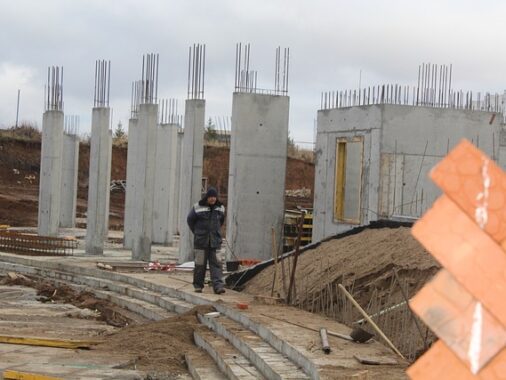Understanding Air Changes Per Hour: A Complete Guide
Air Changes Per Hour (ACH) measures how many times the air in a room is completely replaced with fresh air within one hour. This crucial metric determines indoor air quality, affecting health, comfort, and safety in residential, commercial, and industrial spaces.
Proper ventilation reduces airborne contaminants, controls moisture levels, and removes odors. Different spaces require different ACH values based on their purpose and occupancy.
Based on ASHRAE (American Society of Heating, Refrigerating and Air-Conditioning Engineers) standards and industry best practices:
- Homes: 0.35-1.0 ACH (minimum for health)
- Offices: 2-3 ACH for general spaces
- Classrooms: 4-6 ACH for optimal learning environments
- Hospitals (patient rooms): 4-6 ACH minimum
- Restaurants: 8-10 ACH for dining areas
- Laboratories: 6-12 ACH depending on hazard level
- Bathrooms: 8-10 ACH to control moisture and odors
- Kitchens: 7-8 ACH for residential, 15-20+ for commercial
These values represent minimum recommendations. Higher rates may be needed during pandemics or in spaces with specific pollution sources.
Proper ventilation directly impacts health, cognitive function, and safety:
- Reduced illness transmission: Higher ACH values dilute and remove airborne pathogens
- Improved cognitive function: Studies show 20-100% better cognitive scores in well-ventilated spaces
- Moisture control: Prevents mold growth and structural damage
- Odor removal: Creates more pleasant environments
- Pollutant reduction: Removes VOCs, allergens, and other contaminants
During the COVID-19 pandemic, many organizations temporarily increased ACH requirements to 4-6 changes per hour for occupied spaces.
If your calculated ACH is below recommended levels, consider these improvement strategies:
- Mechanical ventilation: Install or upgrade HVAC systems with heat recovery ventilators (HRVs) or energy recovery ventilators (ERVs)
- Natural ventilation: Strategically open windows to create cross-ventilation
- Exhaust fans: Install or upgrade bathroom and kitchen exhaust systems
- Air purifiers: Use HEPA filters with appropriate CADR (Clean Air Delivery Rate) for the space
- Duct cleaning: Improve existing system efficiency
- System balancing: Ensure supply and exhaust are properly balanced
For specialized spaces like laboratories or medical facilities, consult with mechanical engineers specializing in ventilation systems.
Even professionals sometimes make these errors when calculating ACH:
- Ignoring obstructions: Furniture, equipment, and partitions affect air mixing
- Unit conversion errors: Especially between imperial and metric measurements
- Inaccurate airflow measurements: Using incorrect methods to measure CFM or m³/s
- Neglecting occupancy variations: ACH requirements change with number of occupants
- Overlooking infiltration: Natural air leakage through building envelope
- Assuming perfect mixing: In reality, air rarely mixes perfectly in spaces
For critical applications, consider professional air balancing and measurement using tracer gas techniques for maximum accuracy.
Real-World Application: Case Study
A middle school classroom measuring 30′ × 30′ with 10′ ceilings was experiencing high absenteeism during flu season. Using our calculator, they determined their ACH was only 1.5—below the recommended 4-6 ACH for classrooms.
After upgrading their HVAC system to achieve 5 ACH, they reported:
- 23% reduction in absenteeism
- Improved standardized test scores
- Teacher reports of better student concentration
- Energy savings from the modern, efficient system
Professional Tip from Our HVAC Experts
“While calculating ACH is essential, remember that air distribution matters just as much as quantity. Strategic placement of supply and return vents ensures proper mixing and prevents ‘short-circuiting’ where air moves directly from supply to return without properly ventilating the space. Always consider both quantity and distribution for optimal results.”
– Michael Roberts, Senior Mechanical Engineer with 15 years of ventilation specialization
Frequently Asked Questions
CFM (Cubic Feet per Minute) measures airflow rate, while ACH (Air Changes per Hour) measures how frequently air is replaced in a space. ACH incorporates room volume, making it a more useful metric for evaluating ventilation effectiveness in specific spaces.
Yes, excessive ACH can cause problems including:
- Energy waste from conditioning excessive outdoor air
- Draftiness and discomfort for occupants
- Humidity control issues in humid or dry climates
- Increased noise from higher airflow rates
Balance ventilation needs with energy efficiency and comfort considerations.
We recommend:
- After any renovation or layout changes
- When changing room用途or occupancy
- Seasonally, if you use different ventilation strategies in different seasons
- When adding significant furniture or equipment that might affect airflow
- If occupants report stuffiness, odors, or moisture problems
Optimize Your Indoor Air Quality Today
Now that you understand the importance of proper ventilation, use our calculator to assess your spaces. If your ACH falls below recommended levels, consider consulting with HVAC professionals to improve your ventilation strategy.
Proper air changes per hour represent one of the most impactful yet often overlooked aspects of building design and operation. By optimizing your ACH, you’re investing in health, comfort, and cognitive performance for all occupants.






